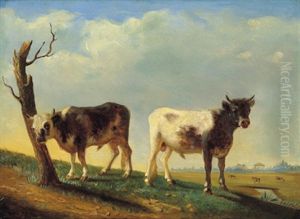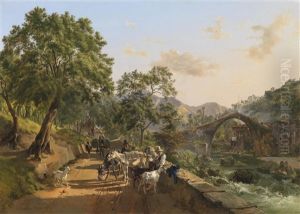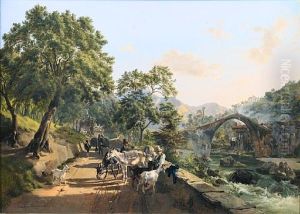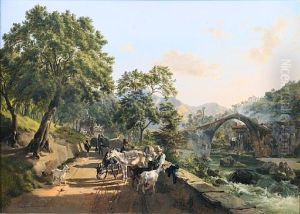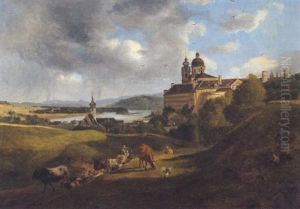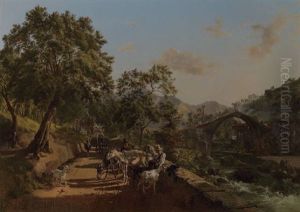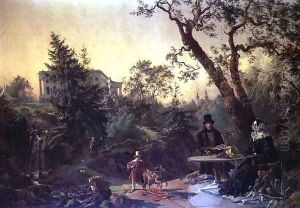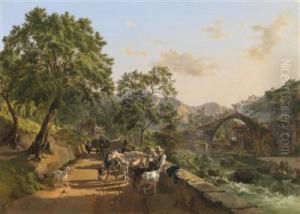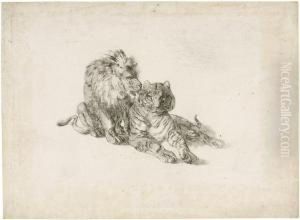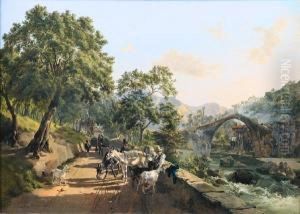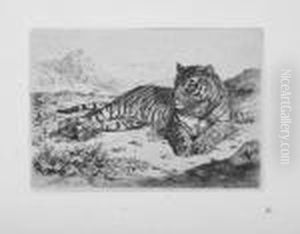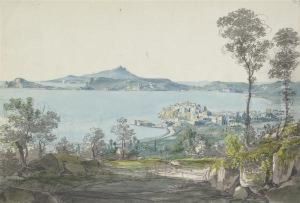Johann Nepomuk Rauch Paintings
Johann Nepomuk Rauch was an Austrian sculptor active during the early 19th century. Born on March 15, 1804, in Vienna, Rauch showed an early inclination towards the arts. He was trained at the Academy of Fine Arts Vienna, which was a major center of art and culture during his time. The academy provided him with a strong foundation in the neoclassical style, which was prevalent in Europe during the late 18th and early 19th centuries.
Rauch's work was characterized by a blend of classical traditions with a sense of romanticism that was beginning to take hold in the arts during his lifetime. His sculptures often featured mythological and allegorical subjects, a common theme in neoclassical art, but they also conveyed a sense of dynamism and emotion that hinted at the emerging Romantic sensibilities of the period.
Despite his talent, Johann Nepomuk Rauch's career was relatively short-lived. He struggled with health issues throughout his life, which affected his ability to produce a large body of work. Nevertheless, he managed to create several notable sculptures that were well received by his contemporaries. His works were exhibited in various salons and he garnered some commissions that helped to establish his reputation.
Tragically, Rauch's life was cut short when he died on July 21, 1847, in his hometown of Vienna at the age of 43. While he may not be as widely recognized as some of his contemporaries, Rauch's contributions to Austrian sculpture and the neoclassical movement remain noteworthy. His works can be seen as a bridge between the classical ideals of the 18th century and the more expressive and emotive tendencies that would come to define the Romantic era in the arts. Rauch's sculptures are valued for their craftsmanship and artistry, and they continue to be studied by art historians interested in the transition between neoclassicism and romanticism in European sculpture.
